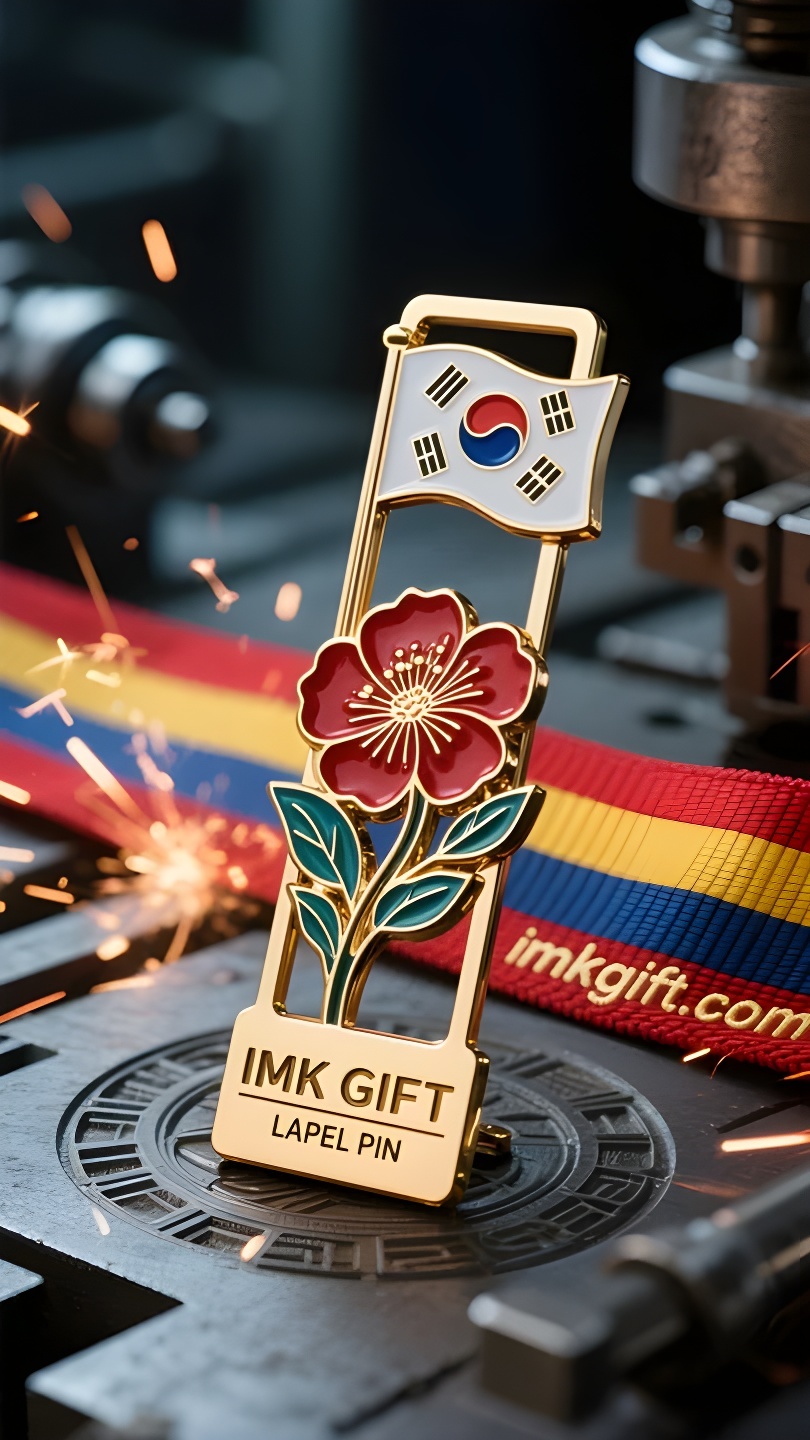in993-무궁화꽃이-피는-곳-태극등
▼
8월이 되면 한국 거리에는 태극기가 휘날리고, 활짝 핀 목화꽃은 국가적 정신의 위도와 경도를 엮어냅니다. 광복절이 다가오면서 경도와 위도와 같은 이 두 가지 상징이 함께 어우러져 한국인의 독특한 정신적 지도를 형성합니다. 태극기 중앙에 있는 음양의 물고기는 움직임과 정지가 공존하는 동양의 지혜를 구현합니다. 빨간색과 파란색의 조합은 마치 아침 이슬 속에서 꽃잎을 펼치는 히비스커스 꽃의 고요함과 같습니다. 시간의 시험을 견뎌온 이 깃발은 영원한 히비스커스 책갈피의 이미지와 멋진 공명을 이룹니다. 전자는 바람에 펄럭이고 후자는 책 페이지 사이에서 조용히 보호하며, 강인함과 유연성을 결합한 삶의 철학을 함께 해석합니다. 히비스커스 북마크의 특별한 점은 “무한의 꽃”이라는 별명입니다. 꽃잎이 져도 새로운 꽃봉오리가 하나둘 피어나듯, 책갈피도 영원히 독서의 마디에 멈춰 서서 사람들에게 다시 시작할 용기를 줍니다. 손끝으로 목화꽃 무늬를 쓰다듬으면, 마치 국가의 기억 속에서 절망적인 상황에서 다시 태어나는 순간을 만지는 듯한 느낌이 든다. 전쟁의 폐허에서 일어선 국가, 금융 폭풍 속에서 재건된 경제, 문화적 사막에서 꽃피운 한류. 태극기의 4괘는 일 년 내내 피는 목화꽃의 강인함을 상징합니다. 건(乾), 곤(坤), 간(干), 리(里)는 자연적 요소일 뿐만 아니라 민족적 성격의 구현이기도 합니다. 마치 무궁화꽃 책갈피가 언제나 희망의 위치를 알려주듯이, 태극기는 언제나 앞으로 나아갈 길을 알려줍니다. 두 이론 모두 진정한 영원은 정적인 완벽함이 아니라 끝없는 자기 갱신에 있다고 말합니다. 이 땅에서 매일 아침, 아침 햇살이 태극기를 황금빛으로 물들이면, 목화 책갈피가 달린 고전 책들이 살며시 펼쳐집니다. 시들고 꽃피는 순환 속에서 항상 새로운 이야기가 자랍니다.
In August, the Taegeukgi flag flying in the streets and the hibiscus flowers in full bloom weave the warp and weft of the national spirit. On the occasion of Liberation Day, these two symbols, like the warp and weft, weave a unique spiritual map of Koreans. The yin-yang fish in the center of the Taegeukgi interprets the oriental wisdom of the coexistence of movement and stillness. The fusion of red and blue is just like the calmness of the hibiscus flower spreading its petals in the morning dew. This flag, which has been washed by the years, forms a wonderful resonance with the eternal image of the hibiscus bookmark – the former flutters in the wind, and the latter silently guards between the pages of the book, together interpreting the philosophy of life that combines hardness and softness. The special thing about the hibiscus bookmark is its nickname of “infinite flower”. Even if the petals fall, new buds will bloom one after another, just as the bookmark is always fixed at the node of reading, giving people the courage to start again. When the fingertips touch the hibiscus pattern, it seems to touch the moments of rebirth from desperate situations in the national memory: the nation standing up from the ruins of war, the economy reborn in the financial storm, and the Korean wave blooming in the cultural desert. The four hexagrams of the Taegeukgi implicitly match the tenacity of the hibiscus flower that blooms all year round: Qian, Kun, Kan, and Li are not only natural elements, but also the embodiment of national character. Just as the hibiscus bookmark always marks the location of hope, the Taegeukgi always guides the direction of progress. Both of them tell the story: the true eternity is not in static perfection, but in the never-ending self-renewal. Every morning on this land, when the morning sun gilds the Taegeukgi, the classics with the hibiscus bookmark are gently opened – new stories are always growing in the cycle of withering and blooming.
八月的韩国,街头巷尾飘扬的太极旗与盛放的木槿花,共同编织着民族精神的经纬。在光复节来临之际,这两大象征物如经线与纬线,交织出韩国人特有的精神图谱。
太极旗中央的阴阳鱼,演绎着动静相生的东方智慧。红色与蓝色的交融,恰似木槿花在晨露中舒展花瓣的从容。这面历经岁月涤荡的旗帜,与木槿花书签的永恒意象形成奇妙共振——前者在风中猎猎作响,后者在书页间静默守护,共同诠释着刚柔并济的生命哲学。
木槿花书签的特别之处,在于其”无穷花”的别称。即便花瓣凋落,新的花蕾会次第绽放,正如书签永远定格在阅读的节点,给予人们重新出发的勇气。当指尖摩挲过木槿花纹路,仿佛触摸到民族记忆里那些绝境重生的时刻:从战火废墟中站起的民族,在金融风暴里涅槃的经济,在文化荒漠中绽放的韩流。
太极旗的四卦暗合木槿花四季常开的坚韧:乾坤坎离不只是自然元素,更是民族品格的具象化。正如木槿花书签永远标记着希望的位置,太极旗永远指引着前进的方向。两者共同诉说着:真正的永恒不在静止的完美,而在永不停歇的自我更新。
这片土地上的每个清晨,当朝阳为太极旗镀上金边时,夹着木槿花书签的典籍正被轻轻翻开——新的故事,永远在凋谢与绽放的循环中生长。
▼
Contact Us
📞 Tel: +0086-760-85286839
📧 Email: sales3@imkgift.com








